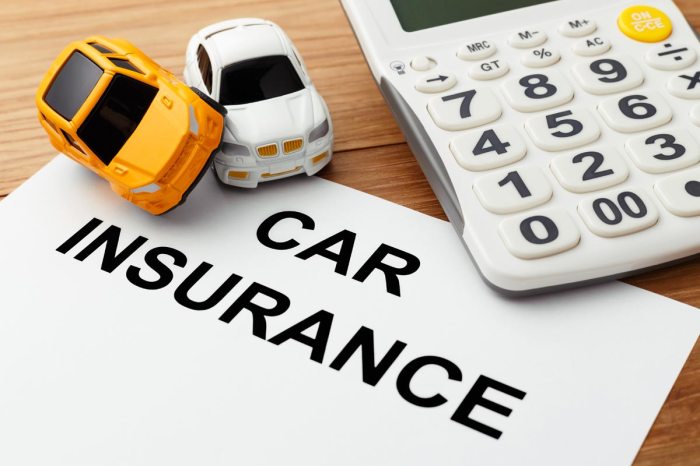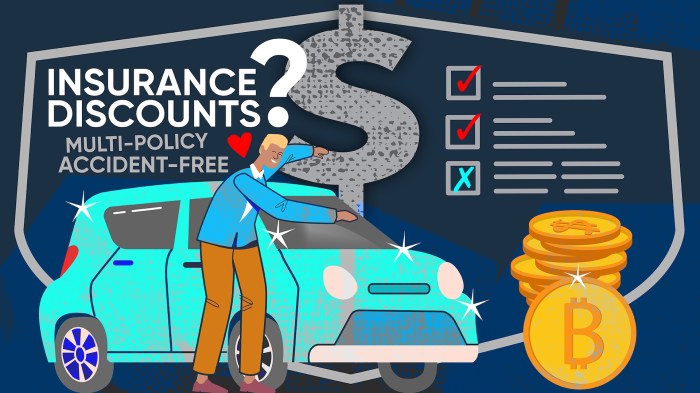New Car Insurance Price A Comprehensive Guide
Factors Influencing New Car Insurance Prices
New car insurance price – Several factors significantly impact the cost of new car insurance. Understanding these influences allows for better preparation and potentially lower premiums. This section will explore key elements affecting your insurance rates.
Vehicle Make and Model
The make and model of your car are major determinants of insurance costs. Luxury vehicles and sports cars, often associated with higher repair costs and a greater risk of theft, generally command higher premiums than economical sedans. Insurance companies use statistical data on repair costs, theft rates, and accident frequency for specific vehicle models to calculate risk and set premiums accordingly.
For example, a high-performance BMW M3 will typically have a higher insurance premium than a Honda Civic.
Driving History
Your driving history is a crucial factor in determining insurance premiums. A clean driving record with no accidents or traffic violations will usually result in lower rates. Conversely, a history of accidents, speeding tickets, or DUI convictions will significantly increase your premiums. Insurance companies assess risk based on the frequency and severity of past incidents, reflecting the likelihood of future claims.
Age and Location
Both age and location play a significant role in insurance pricing. Younger drivers, statistically, are involved in more accidents than older, more experienced drivers, leading to higher premiums for younger age groups. Location also matters; areas with higher crime rates or more frequent accidents tend to have higher insurance costs due to increased risk for insurers.
Credit Score
In many regions, your credit score can influence your insurance premiums. Insurers often use credit scores as an indicator of risk, with individuals possessing lower credit scores generally paying higher premiums. This practice is based on the correlation between credit history and insurance claims behavior, although the exact relationship is debated.
Coverage Levels

Source: prontoinsurance.com
The level of coverage you choose directly affects your insurance premium. Liability-only coverage, which covers damages to others, is the most basic and least expensive. Adding collision (damage to your vehicle) and comprehensive (damage from other causes, like theft or weather) coverage increases premiums, but provides greater protection.
| Make/Model | Average Annual Premium | Coverage Level |
|---|---|---|
| Honda Civic | $1200 | Liability |
| Toyota RAV4 | $1500 | Liability + Collision |
| Ford F-150 | $1800 | Comprehensive |
| BMW 3 Series | $2500 | Liability + Collision + Comprehensive |
Finding the Best New Car Insurance Deals
Securing the best car insurance rates involves diligent comparison and negotiation. This section provides strategies to help you find affordable coverage.
Comparing Insurance Quotes
Several methods exist for comparing insurance quotes. Online comparison websites allow you to input your information and receive quotes from multiple insurers simultaneously. Directly contacting insurance companies individually is another approach, allowing for more detailed discussions. Independent insurance agents can also assist in comparing options from various providers.
Bundling Insurance Policies
Bundling home and auto insurance with the same provider often results in discounts. This convenience also simplifies policy management, but it’s crucial to compare bundled rates against separate policies to ensure cost-effectiveness. While bundling often offers savings, it’s important to independently compare rates to ensure you’re getting the best deal.
Insurance Discounts
Many insurance companies offer discounts for various factors. Safe driver discounts reward accident-free driving records. Good student discounts are available for students maintaining high academic performance. Other discounts might include multi-car discounts or discounts for installing anti-theft devices.
Obtaining Car Insurance Quotes Online
Obtaining online quotes is a straightforward process. Most insurers have user-friendly websites. You’ll typically need to provide information such as your driving history, vehicle details, and desired coverage levels. The process usually takes only a few minutes, and you’ll receive immediate quotes.
Negotiating Lower Premiums
Negotiating lower premiums is possible. Highlighting your clean driving record, exploring different coverage options, and inquiring about available discounts can lead to savings. Comparing quotes from multiple insurers provides leverage for negotiation.
Securing new car insurance can be a significant expense, varying greatly depending on the vehicle’s make and model. Naturally, the cost of the car itself plays a role; for example, if you’re considering a new MG, checking the mg new car price will help you budget accordingly. This overall cost, including the car’s purchase price, significantly impacts your insurance premium calculations.
Therefore, understanding both factors is key to planning your automotive budget.
Common Insurance Policy Add-ons
Several add-ons can enhance your insurance coverage, but at an added cost. Consider whether these additions are necessary for your specific needs.
- Rental car reimbursement
- Roadside assistance
- Gap insurance
- Uninsured/underinsured motorist bodily injury coverage
Understanding Insurance Policy Components
Understanding your insurance policy’s components is vital for making informed decisions and ensuring adequate protection. This section explains key aspects of insurance policies.
Coverage Types
Several coverage types are available. Liability coverage pays for damages you cause to others. Collision coverage covers damage to your vehicle in an accident. Comprehensive coverage protects against damage from events other than collisions, such as theft or hail. Uninsured/underinsured motorist coverage protects you if you’re involved in an accident with an uninsured or underinsured driver.
Deductibles and Premiums
Deductibles are the amount you pay out-of-pocket before your insurance coverage kicks in. Premiums are the regular payments you make to maintain your insurance coverage. Higher deductibles generally result in lower premiums, and vice-versa. The choice depends on your risk tolerance and financial situation.
Filing a Claim
Filing a claim usually involves contacting your insurer, providing details of the incident, and cooperating with their investigation. The process varies depending on the type of claim and the insurer’s procedures. It’s essential to promptly report any accidents or incidents to your insurer.
Payment Plans
Most insurers offer various payment plans, including monthly and annual payments. Annual payments often come with a slight discount, while monthly payments provide greater flexibility.
Choosing a Deductible
A higher deductible reduces your premium but increases your out-of-pocket expenses in the event of a claim. A lower deductible increases your premium but reduces your out-of-pocket expenses. The optimal deductible depends on your risk tolerance and financial capacity.
Insurance Policy Document Illustration
Imagine the policy document as a multi-sectioned booklet. The first section contains your personal information and policy details (policy number, effective dates, covered vehicles). The next section Artikels coverage details, specifying liability limits, deductibles for collision and comprehensive, and other coverage types. A subsequent section lists exclusions, detailing what’s not covered. Finally, a section covers payment information, including premium amounts and payment schedule.
Key terms are clearly defined within the document, often with a glossary.
The Role of Technology in New Car Insurance
Technology is rapidly transforming the car insurance industry, offering new ways to assess risk and manage policies. This section explores the impact of technology on car insurance.
Telematics Devices, New car insurance price
Telematics devices, often small plug-in devices or built-in car systems, track driving behavior, such as speed, acceleration, and braking. This data can influence insurance rates, potentially lowering premiums for safe drivers. Insurers use this data to create a more accurate risk assessment, rewarding safer driving habits.
Online Platforms and Apps
Online platforms and mobile apps simplify policy management, allowing for easy access to policy information, payment options, and claims filing. Many insurers offer dedicated apps for managing policies and contacting customer service.
AI and Data Analytics
Artificial intelligence and data analytics are used to refine risk assessment models, leading to more accurate and personalized pricing. AI algorithms analyze vast datasets to identify patterns and predict the likelihood of claims, enabling insurers to offer more tailored premiums.
Innovative Insurance Products and Services
Innovative products include usage-based insurance (UBI), where premiums are based on actual driving behavior, and pay-as-you-drive insurance, where premiums are calculated based on the number of miles driven. These models offer greater flexibility and potentially lower premiums for safe, low-mileage drivers.
Traditional vs. Tech-Driven Insurance

Source: motortrend.com
Traditional insurance relies heavily on demographic data and historical claims data. Tech-driven insurance incorporates real-time data from telematics and driver behavior to offer more personalized and dynamic pricing.
Driver Behavior Data and Premiums
Data collected through telematics devices and mobile apps provides insurers with a detailed picture of driving habits. This includes hard braking, speeding, and nighttime driving patterns.
Safe driving behaviors, as measured by these technologies, are often rewarded with lower premiums, incentivizing safer driving practices.
Conversely, risky driving habits can lead to higher premiums, reflecting the increased risk to the insurer.
Expert Answers: New Car Insurance Price
What is the average cost of car insurance for a new driver?
The average cost for a new driver varies significantly based on factors like age, location, vehicle type, and driving history. Expect higher premiums than experienced drivers.
Can I get car insurance before my car is delivered?
Yes, many insurers allow you to obtain coverage before your car arrives, provided you have the necessary vehicle details.
How often can I change my car insurance policy?
You can typically change your policy at the end of your current term, although some insurers may allow mid-term changes with penalties.
What happens if I get into an accident before my insurance is fully active?
Coverage may be limited or nonexistent if an accident occurs before the policy’s effective date. Confirm your policy’s start date.




















